 ™
™TRADITIONAL MOUNTAINEERING
™
www.TraditionalMountaineering.org
™ and also
www.AlpineMountaineering.org
™
 ™
™
FREE BASIC TO ADVANCED
ALPINE MOUNTAIN CLIMBING INSTRUCTION™
Home
| Information
| Photos
| Calendar
| News
| Seminars
| Experiences
| Questions
| Updates
| Books
| Conditions
| Links
| Search
![]()
Pulling barbed wire fence at the Hart Mountain Antelope Refuge with ONDA
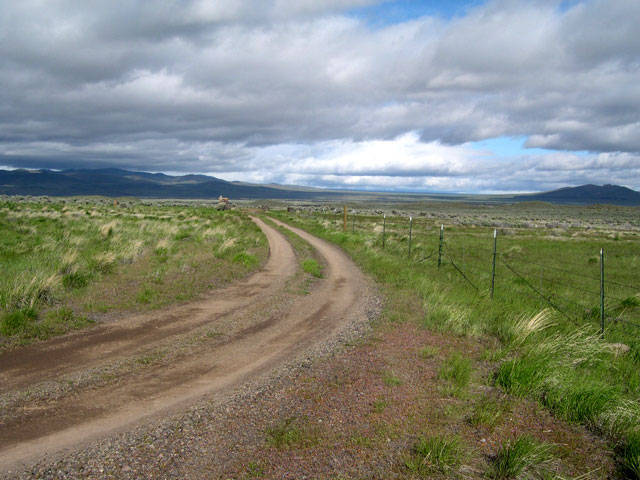
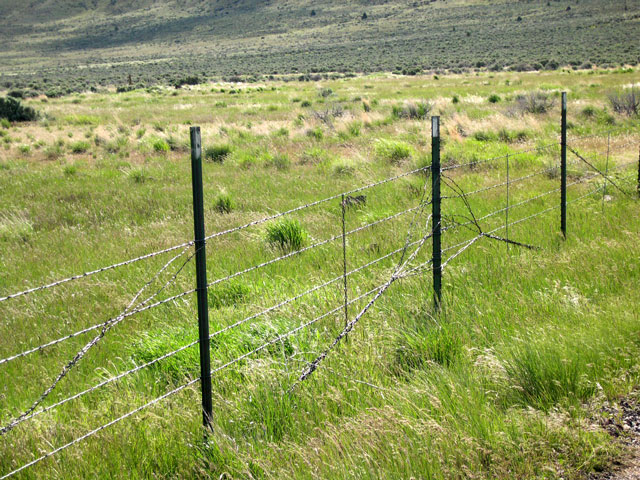
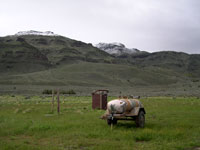
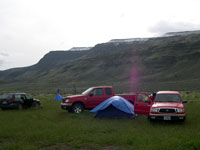
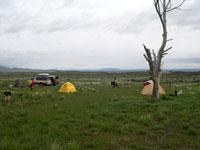
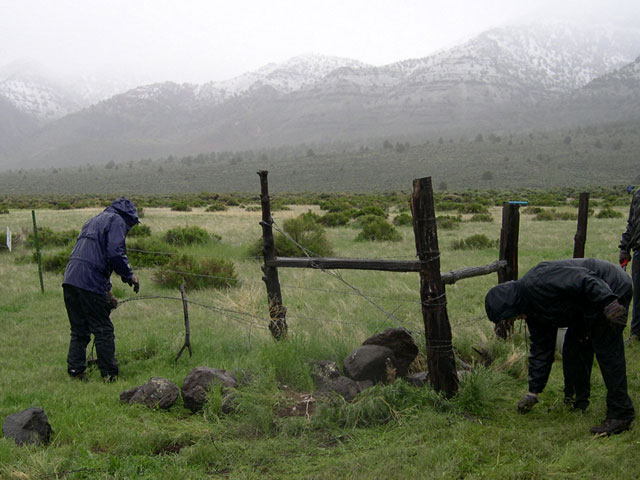
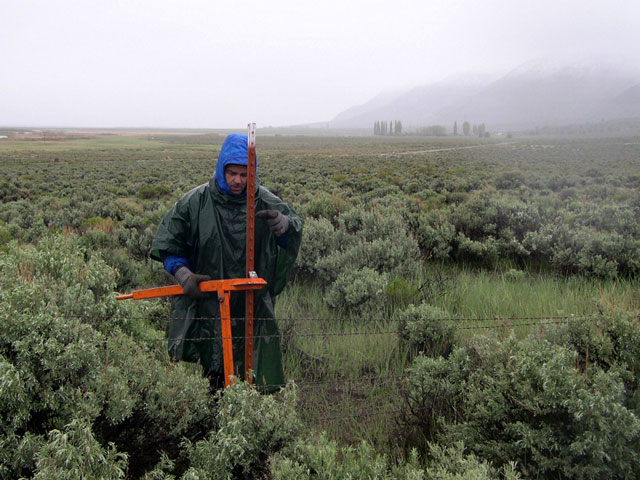
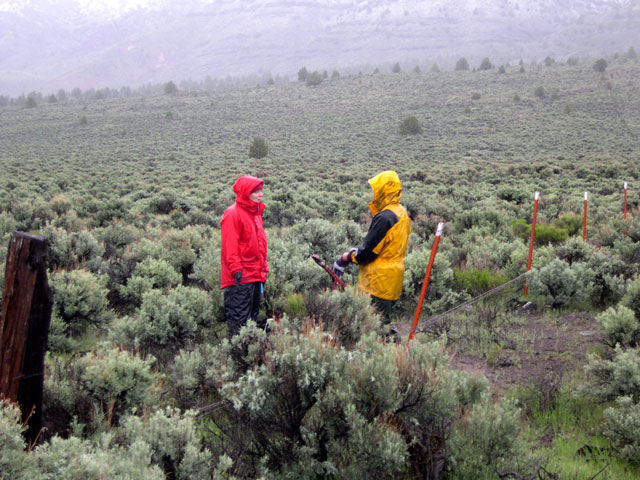
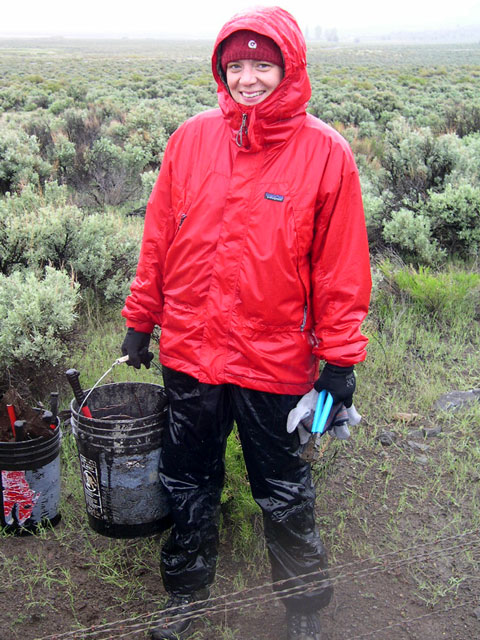
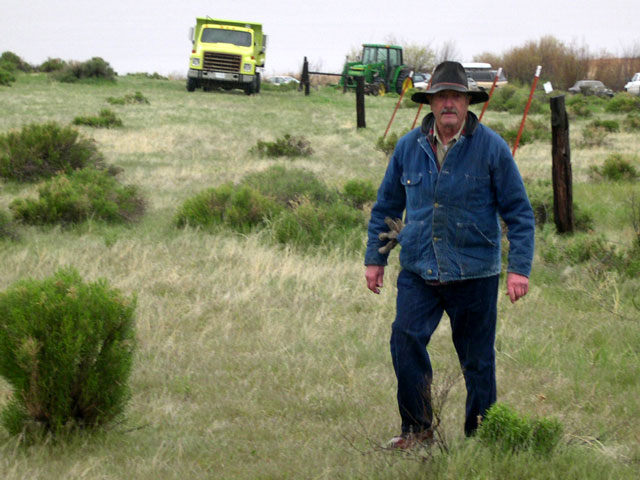
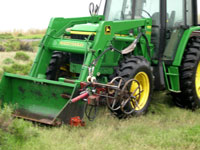
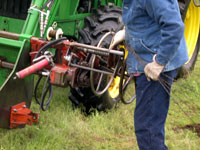
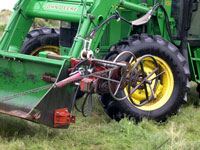
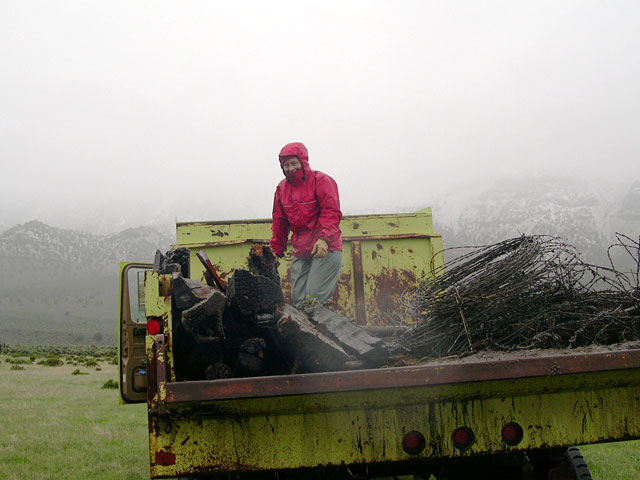
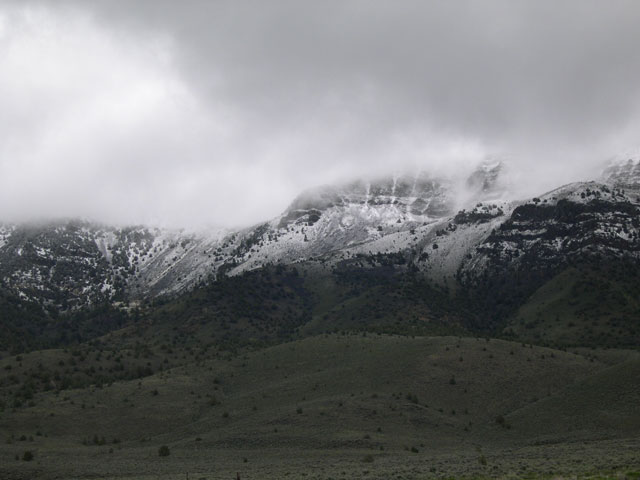
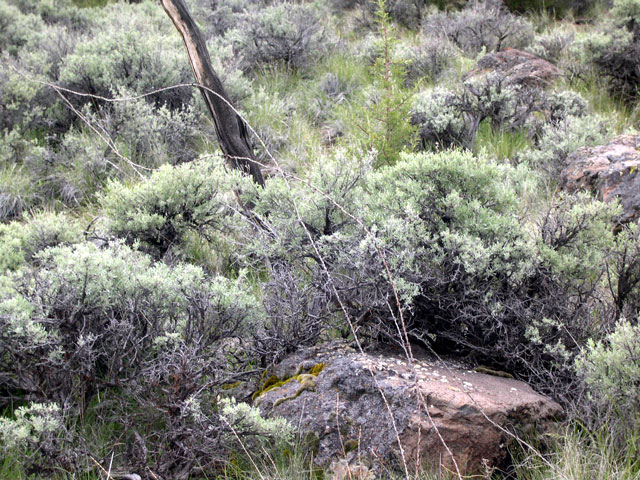
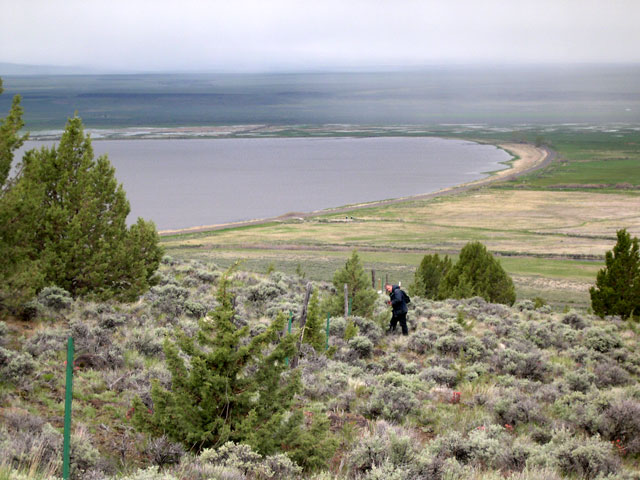
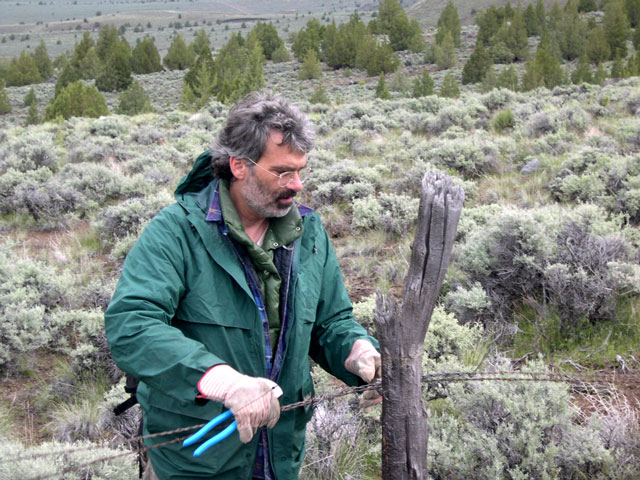
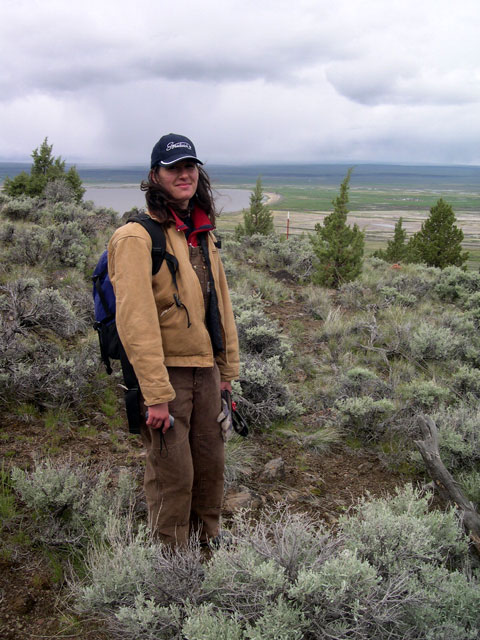
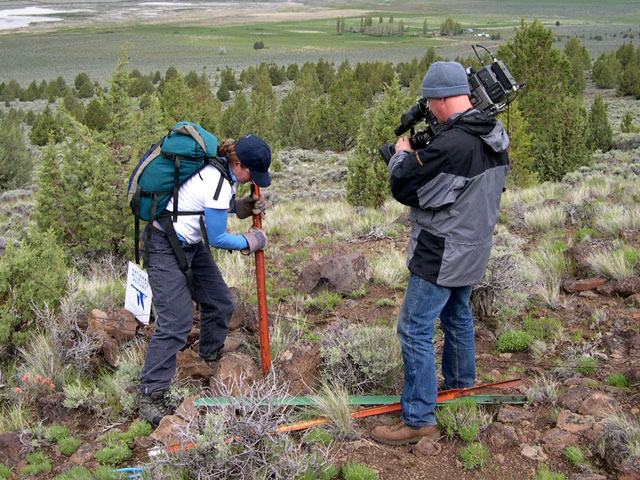
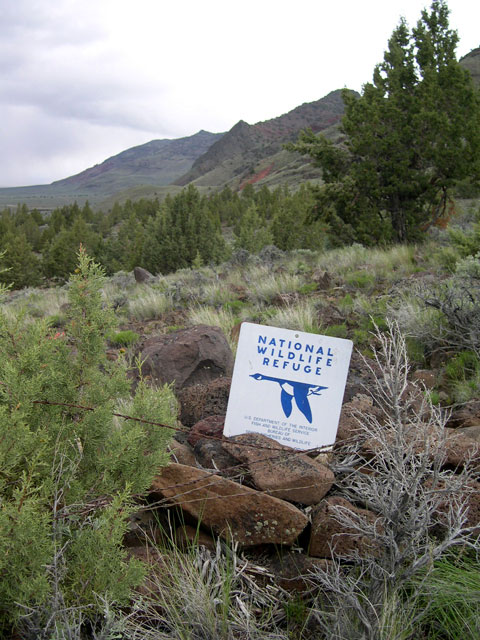
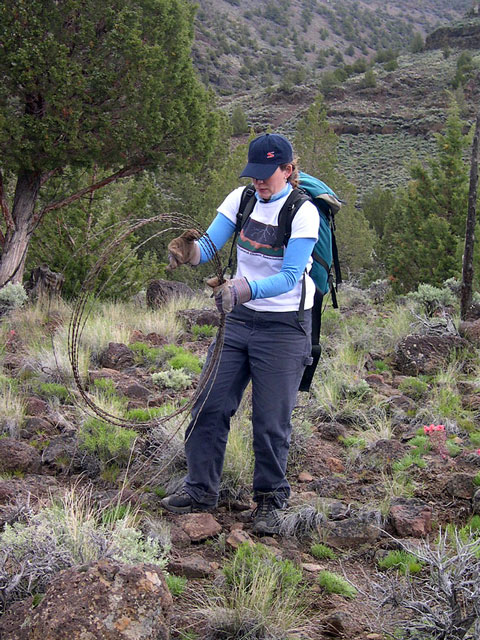
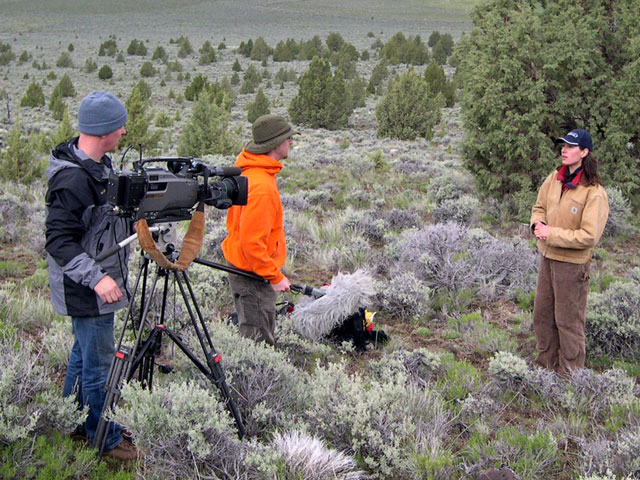
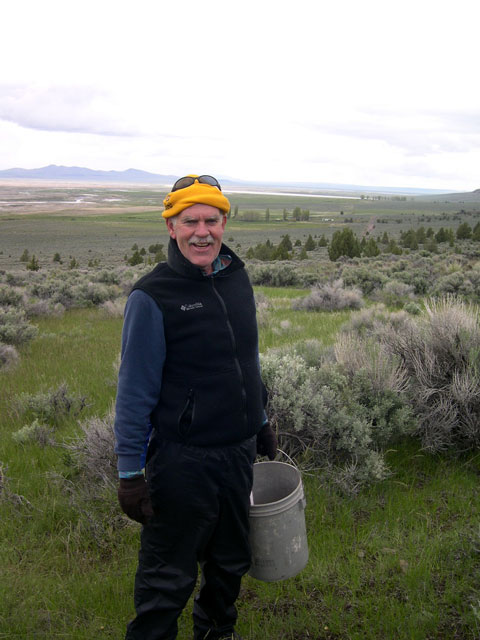
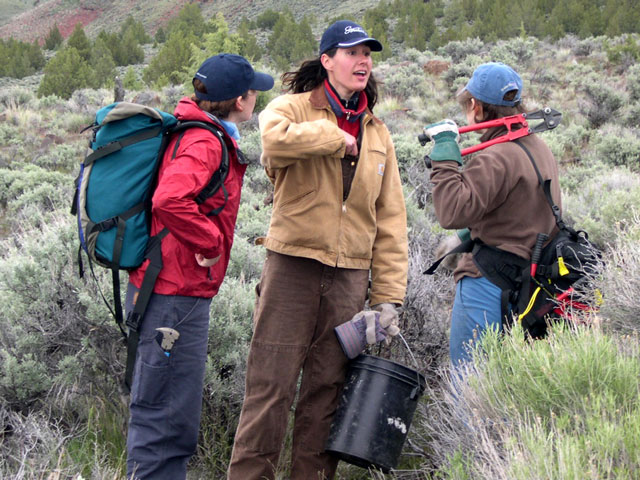
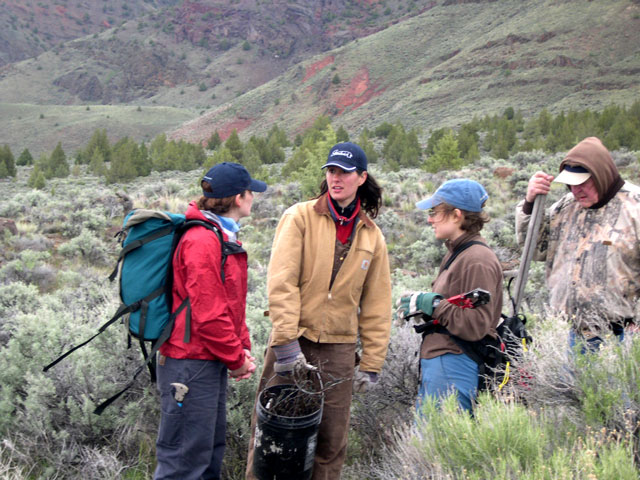
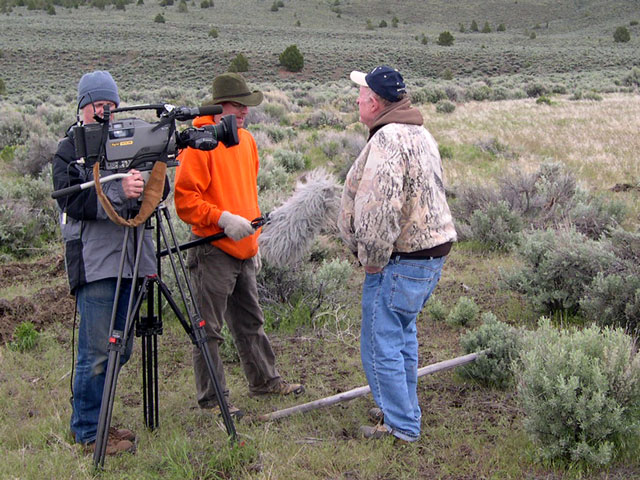
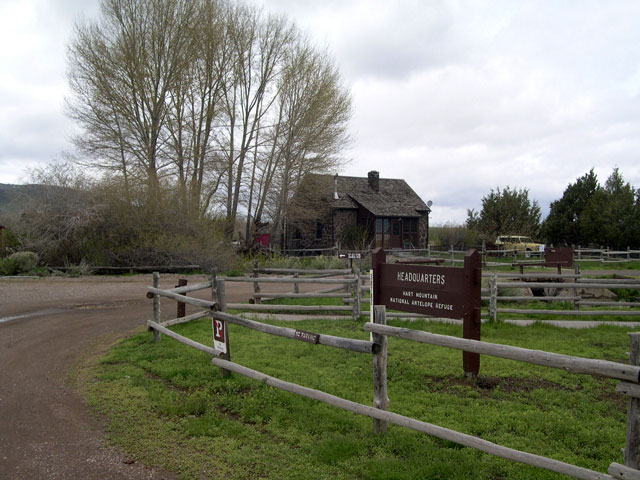
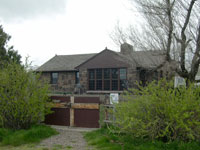
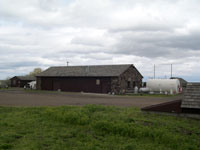
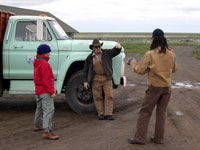
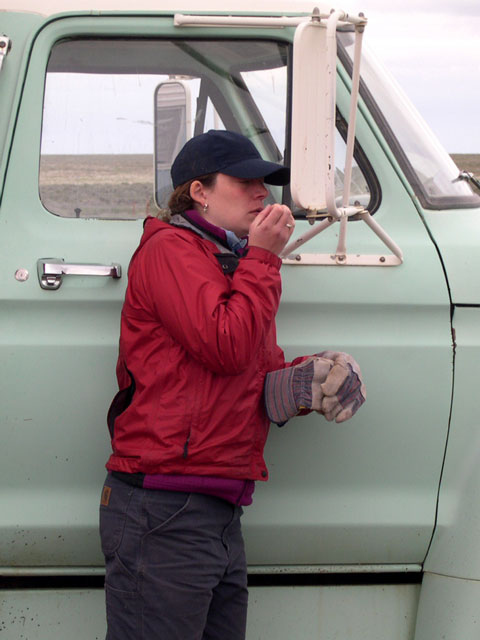
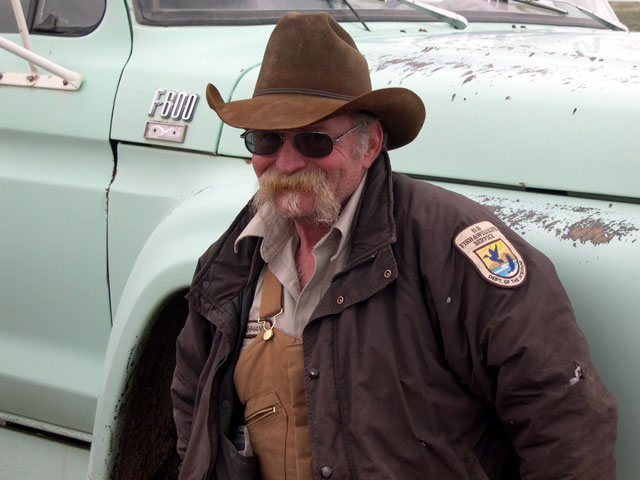
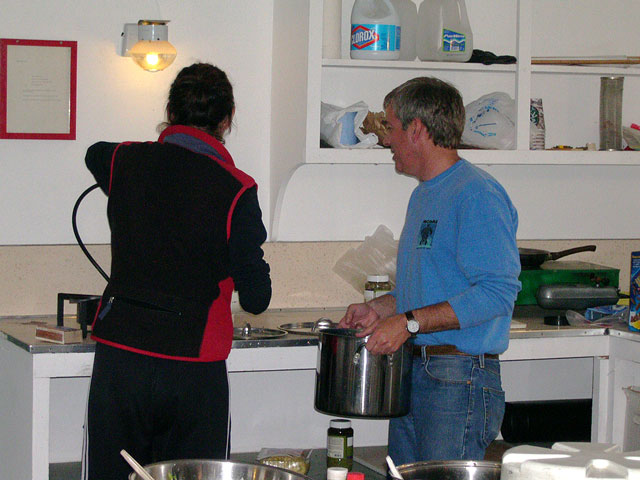
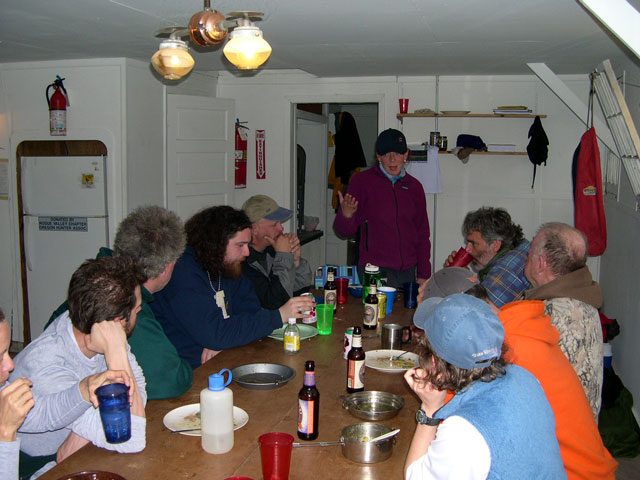
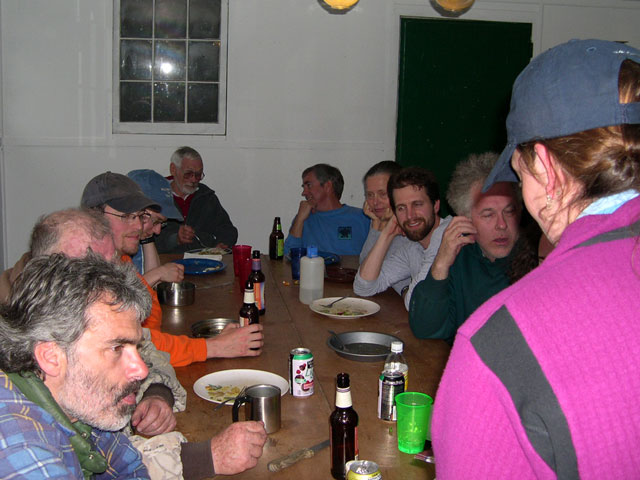
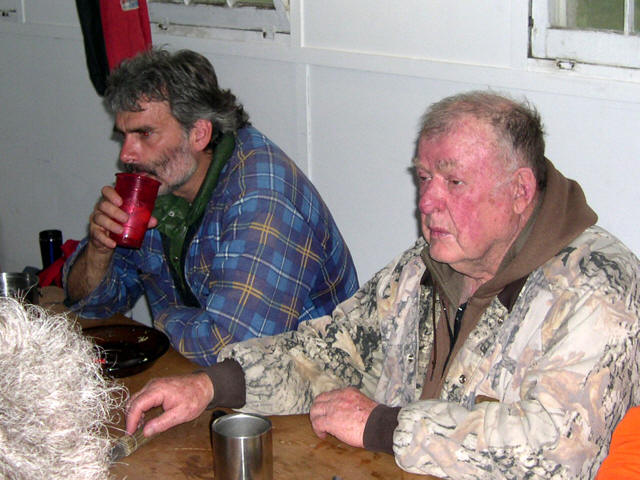
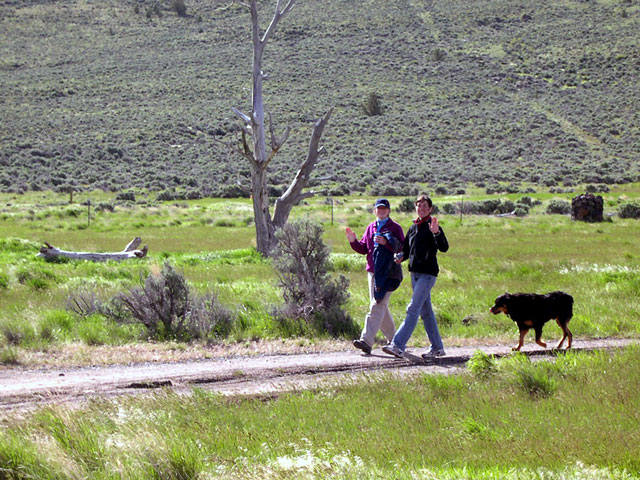
Photographs Copyright© 2005-6 by Robert Speik. All Rights Reserved.
From our Calendar of interesting events:
Sunday through Wednesday, May 15 to18, 2005, Hart Mountain
Fence Pull with Oregon Field Guide, free with ONDA
Oregon Field Guide is doing a special on Hart Mountain and we get to play a
part! The fence pulls have been a significant part of the restoration at the
Refuge and by the end of this summer, all old fence will have been removed. Help
take out some of the last sections of obsolete barbed-wire fence, possibly
appear on OFG, and soak in the hot springs at the cow-free Hart Mountain
National Antelope Refuge. Contact Erin at (541)330-2638 or ebarnholdt@onda.org
for more information.
More information about the Hart Mountain Antelope Refuge

Hart Mountain National Antelope Range
"Hart Mountain National Antelope Refuge derives its name from the massive fault block ridge that ascends abruptly nearly three quarters of a mile above the Warner Valley floor in a series of rugged cliffs, steep slopes, and knife-like ridges. The east side of the mountain is less precipitous, descending in a series of rolling hills and low ridges to the sagebrush-grasslands typical of southeastern Oregon and the Great Basin.
The rugged diversity of the terrain creates a rich mix of habitat
types, home to more than 300 species of wildlife. Featured species include
pronghorn antelope, California bighorn sheep, mule deer, sage grouse, and
redband trout. The 269,000-acre refuge is one of the most expansive wildlife
habitats in the arid West free of domestic livestock.
Since its creation in 1936 as a range for remnant herds of pronghorn antelope,
management of the refuge has broadened to include conservation of all wildlife
species characteristic of this high desert habitat and restoration of native
ecosystems for the public's enjoyment, education, and appreciation.
For over a century, livestock grazing and fire suppression greatly influenced
the native plants and wildlife on the refuge. A management plan completed in
1994 excludes livestock grazing from the refuge for 15 years (until 2009) and
calls for the reintroduction of fire as a primary process to restore native
plant communities and wildlife habitat. Prescribed fire is now used to restore
native plant communities.
We closely monitor the effects of management actions such as
prescribed fire on wildlife and their habitat to ensure management objectives
are met. Hundreds of miles of interior fence were constructed to manage
livestock and utilize vegetation. With livestock removed, the interior fence is
no longer needed and reduces the natural movement of wildlife.
Removing this fence is a primary objective of the refuge. Riparian areas and
upland watersheds are monitored annually to track the recovery of these critical
habitats. If left unchecked, the Hart Mountain feral horse herd, currently about
200 animals, doubles about every 3-4 years. Feral horses are descended from
domestic stock turned loose around the turn of the twentieth century.
Their grazing can devastate native vegetation and severely damage riparian
habitat. They directly compete for forage and water with native wildlife. The
1990 Hart Mountain Comprehensive Management Plan calls for total removal of
these horses. Over 300 species of birds and mammals are found on the refuge.
Pronghorn, sage grouse, mule deer and California bighorn sheep are featured
species.
The Hart Mountain California bighorn sheep herd provides the genesis for the
majority of sheep reintroductions in Oregon. Its health is essential for the
continued success of reintroducing this species throughout the northwest.
Although the refuge has been historically known for its abundant big game, the
extensive riparian habitat and unique old growth juniper woodland has also made
it a mecca for serious birders."
--US Fish & Wildlife Service
More about the joy of pulling fence
'Fence Pulling' Becomes a Wilderness Pastime
There's a waiting list of volunteers to take down the barbed wire that
crisscrosses an Oregon region designated by law as cow-free public land.
By Sam Howe Verhovek
Times Staff Writer
November 6, 2005
FIELDS, Ore. — If you had wanted to visit with John Witzel one recent warm
and cloudless day, you would have driven 20 miles outside town, along a dusty
ranch road here in the high desert of southeastern Oregon, then jumped on a
horse.
You would have ridden five miles through the bull thistle cactus, juniper trees
and lupin that dot the brown hills.
Once you got to Straw Hat Pass and let your horse have a drink at Wildhorse
Creek, you would have traveled up a rust-colored canyon and come upon Witzel, a
sinewy man wearing jeans, chaps and a purple cowboy shirt. He stood firmly, his
arms circling as he cranked a large aluminum spool, and his face was dripping
sweat.
Witzel looked as if he were trying to land a giant fish — though he was reeling
in a 100-foot strand of rusty barbed-wire fence.
Here in the nation's first officially designated "cow-free wilderness," Witzel
and dozens of other volunteers have been using Witzel's invention, a
non-mechanized roller, to remove mile after mile of fencing, not far from the
border with Nevada.
Many of the fences date back nearly a century, to an era of homesteaders and
free cattle-grazing on federal land.
Environmental groups favor taking down the fences because, they say, doing so
would restore the land to a more natural state. With ranching no longer allowed
in the wilderness here, but with no federal funds available for fence removal,
the job of taking down the barbed wire has fallen to the volunteers — as well as
the horses, mules and llamas that carry the equipment, which by law must be
non-mechanized, and that pack out the tight coils of old wire.
Many of these volunteers say they take tremendous satisfaction from "fence
pulling," as they call it, describing it as an important step toward making the
land a true wilderness.
"It's a small thing, and it's hard work, but it's something very tangible you
can do," said Erik Westerholm, 46, a marketing specialist from Eugene, Ore., who
has volunteered on a dozen fence pulls in the last three years.
"It's a rush, actually, when you see a half-dozen pronghorn antelope cruising
through an area where, earlier that day, there was a fence," said Westerholm,
who drove six hours from Eugene to help.
"That's enough of a payment right there."
A fence, said Stephen Gibbs, 52, a volunteer from the Portland suburbs, is "a
huge statement that man is here and trying to control things. Taking it out says
the opposite."
When Congress passed the Steens Mountain Cooperative Management and Protection
Act five years ago, it finalized a complicated land swap that turned some land
over to ranchers, but also set aside 175,000 acres of public land in the area as
protected wilderness.
The unusual cow-free wilderness designation was the result of "a lot of
negotiations between ranchers and environmental groups," said John Neeling,
wilderness specialist for the area, which is overseen by the federal Bureau of
Land Management. Under the 1964 Wilderness Act, grazing is generally allowed on
federal wilderness land where feasible.
The land, known as the Steens, is in a magnificent stretch of glacially carved
escarpments, steppes and canyons, just south of the Malheur National Wildlife
Refuge, a flyway for migratory birds, including trumpeter swans and sandhill
cranes.
In a reflection of the stormy weather here, settlers called one stream the
Donner und Blitzen River — German for thunder and lightning.
Much of the area had been fenced — in fact, homesteading laws required that
settlers who wanted to raise cattle had to fence the property.
Now that the fences can come down, an unusual coalition of local ranchers and
outside environmental groups has stepped in to do the work.
The Oregon Natural Desert Assn., the Sierra Club and Wilderness Volunteers are
three such organizations that have organized fence-pulling trips, which range
from one to five days.
Many volunteers say removing even a single strand of barbed wire is satisfying.
"I think we need to clean up our collective messes," said Kristi Mergenthaler,
37, a botanist from the Medford, Ore., area, who traveled here with her
14-year-old son, Taro Shido, during the summer for a two-day fence pull in the
Steens.
"I mean we, as humanity," said Mergenthaler. "It's not like I put the fence up
or anything, but I feel a responsibility to help take it down."
Many ranchers here would take some offense to the notion that a fence amounts to
a mess. But with the wilderness deal made and the rusty old fences no longer
needed, several ranchers have done their part to help take them out, if a bit
bemusedly as they observe urbanites struggle with the task. (Pulling a fence is
not only hard work, it carries an occupational hazard from the barbs: Being
up-to-date on a tetanus shot is highly advised.)
"I've put fences up, and I've taken fences down," said Marti Johnson, 70, a
fourth-generation rancher, with a hearty laugh as she helped guide a 100-foot
length of wire onto the spool as Witzel cranked it. "I've fixed a lot of fences
in my time. A good fence doesn't bother me!"
Johnson and her husband once had cattle on nearly 10,000 acres here. They sold
their ranch, now 160 acres, to a couple fromPortland a few years ago, and now
they live on the land rent-free.
So far, about 25 miles of fencing have been painstakingly removed, with an
official inventory left of about 60 more miles — although, the BLM's Neeling
said, "we keep finding more all the time." About 25% of the wire is salvageable
for use elsewhere on federal lands.
Pulling just a mile of fence can take a 10-volunteer team a day or more. Neeling
will often help fence-pulling groups get started, and check on them while they
are working in the rocky area.
"We can't keep people away," he said. "We're beating them off with sticks,
practically. They come from all walks of life."
Witzel, a fourth-generation eastern Oregonian whose grandfather came here as a
land surveyor in the 1870s, leads guided trips into the Steens for a living. The
contraption he invented to coil the wire can be either packed in on a mule or
carried like a backpack using attachable straps.
Witzel sold his first machine to the BLM three years ago for $2,500, and two
others for $1,500 apiece. He also volunteers from time to time to coil the wire
and take it out, as he did one day recently with help from Johnson, the retired
rancher, and two mules named Dusty and Periwinkle.
"Necessity is the mother of invention," Witzel said with a laugh as he paused
from his work. "It'd be easier to do this with a tractor and a power roller, of
course, but that'd be contrary to the law under wilderness designation. You're
not supposed to bring any noisy machines in here, unless it's for a human
emergency."
His hand-rolling device allows the job to be done about four times more quickly
than trying to roll up the wire like a garden hose. It also enables the coil to
be wound more tightly, making it possible to wind as much as a quarter-mile of
fencing onto one spool.
The fence removal is expected to take at least another three summers, but
probably with no shortage of volunteers — in fact, for several trips this year,
there was a waiting list.
"It's a chance that really doesn't come along every day," said Jill Workman,
chair of the Oregon chapter of the Sierra Club and a veteran of seven fence
pulls. "It's really a chance to re-wild the place."
Or as Gibbs put it: "When you work your way up a canyon, rolling up a fence, and
then you turn around and you can hardly tell the fence was ever [there], it's
just a great feeling."
![]()
Read more . . .
ONDA
Hart Mountain National Wildlife Range
Hart
Mountain Antelope Refuge
Environmental
Pulling barbed wire fence at the
Oregon Antelope Refuge with ONDA
An update on the Hart Mountain Antelope Refuge in
Oregon
Adopt-a-Road with
TraditionalMountaineering
The Bend Bicycle Festival 2004
Wolves introduced to the High
Desert Museum
Twenty old growth
Juniper stolen from The Badlands WSA -
More information
A sustainable way to use feathers to
adorn my lady
ODFW clinic - Becoming an Outdoors Woman
President Bush holds photo opportunities
Trail Crew builds a log bridge over Spring
Creek
Sierra Club holds a Christmas party
Tour fire ravaged Davis Lake
IMBA helps COTA build trails
South Sister climbers trail relocated
President Bush hopes no child will be left behind
Adopt-A-Highway with TraditionalMountaineering
Department of Inferior dumps wilderness protection
An ODFW juvenile steelhead sampling project near John Day, Oregon
The ODFW juvenile steelhead survey in the
stream
Owyhee Canyon wilderness study area in south east Oregon
ONDA's Owyhee
wilderness inventory camp near Rome, Oregon
Riverfest river cleanup in Bend Oregon
USFS Mud Bog
poster
A Pay to Play bust
President Bush reassures us that SUVs do not damage the environment!
President
Bush overlooking the environment
Al Gore and his young son summit Mt. Rainier
Fee Demo demonstration in Central Oregon
The
Badlands Wilderness
Deschutes County
takes no position on Badlands Wilderness
OpEd - Dirt
road through The Badlands must close
Photos of Road 8
damage sent to Commissioners
Badlands Wilderness with a
road?
The Badlands
have unique interest for the hiker
BLM
guidelines for Geocaching on public lands
Geocaching on Federal
Forest Lands
OpEd -
Geocaching should not be banned in the Badlands
Fee Demo groundwork may
save Geocaching on our public lands
Protest of
exclusion of Geocaching in Badlands WSA in BLM's UDRMP
BLM's UDRMP puts Bend's
Badlands off limits to Geocaching
Deschutes County
Commissioners hearing on Badlands Wilderness support
OHV use restricted in Upper Deschutes
Resource Management Plan
Winter
hiking in The Badlands WSA just east of Bend
Tread Lightly OHV USFS
tip of the month
OHVs to be held to
designated trails by USDA Forest Service!
New pole shows Badlands
Wilderness favored by voters
BLM posts Reward for information on
Juniper rustlers
BLM weighing public input on management plan
Oregon's Badlands hit by old growth Juniper rustlers
Photos
Congressman Greg Walden to visit The Badlands
Badlands Wilderness endorsed by COTA
OpEd
- Unregulated OHV use is being reviewed across the western states
OHV use curtailed by new USFS policy decisions
Sierra Club's Juniper Group
supports Badlands Wilderness
OHV regulation discussed at BLM meeting in Bend, Oregon
OpEd - Badlands part of
BLM's recreation management area
OpEd - We need the Badlands Wilderness
OpEd - Off-roaders have no reason to fear Badlands Wilderness designation
Speak for the Badlands at Town Hall Meeting
Hiking poles are becoming essential gear
Vandals destroy ancient
pictographs in the Badlands
Senator
Wyden tests support of Badlands Wilderness
Badlands Wilderness endorsed by Bend City
Commissioners
The Badlands:
proposed for Wilderness status
The Badlands unique geologic forms
explained by Chitwood pdf
The
Badlands, a brief history
The Badlands
pictographs
reported 75 year ago
About Alpine Mountaineering:
The Sport of Alpine Mountaineering
Climbing Together
Following the Leader
The Mountaineers' Rope
Basic Responsibilities
The Ten Essentials
About our World Wide Website:
Information
Mission
![]()
Subscription
Form I am still pondering this. Hmmm.
Our
Gear Discounts Don't miss this!
Please Read Me
Awards, pdf, affiliations, donations and more